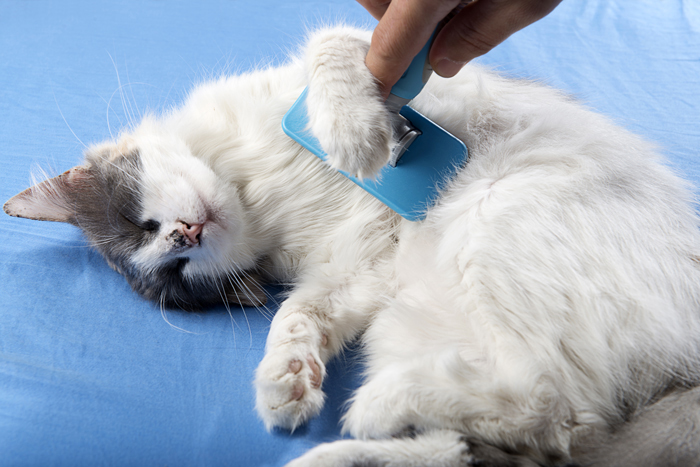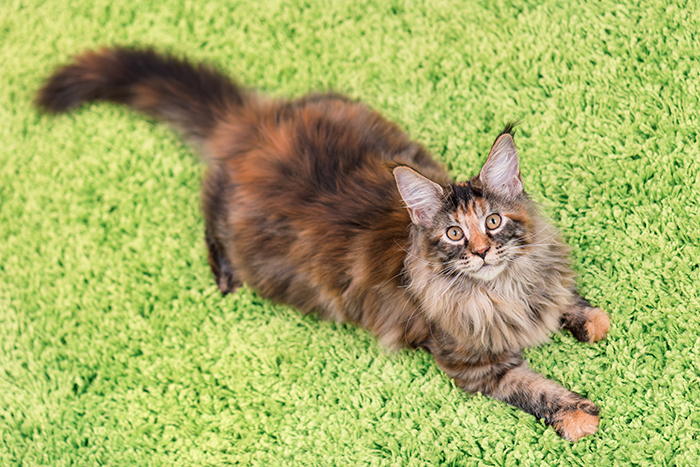Here are eight steps you can take to ensure your cat stays in tip-top shape.
The start of a new year tends to encourage us to renew our focus on our health and welfare. It’s also the perfect time for cat owners to focus on the health and well-being of our feline companions. In recognition of National Cat Health Month, make time to schedule your cat’s annual veterinary checkup, and consider these ways you can help your cat live a longer, healthier, happier life.
Take Your Cat in for Her Annual Well Check

© didesign/Adobe Stock
A yearly checkup is one of the best ways to keep your cat in her best possible health. These annual visits allow your veterinarian to notice any changes in your cat’s condition from year to year, and help you catch potentially serious issues early.
Keep Your Cat’s Vaccinations Up-to-Date
At your cat’s annual exam, your vet will review any necessary booster shots and updates to your cat’s vaccination schedule. These regular inoculations will help prevent your cat from contracting serious illnesses if he is exposed to other cats.
Neuter Your Cat
One of the best ways to maintain your cat’s good health is to have him or her altered. These procedures prevent many illnesses and conditions related to a cat’s reproductive organs as well as help eliminate many unwanted behaviors. The procedures also prevent unwanted litters and help reduce animal overpopulation.
Pay Attention to Your Cat’s Dental Health

© Africa Studio/Adobe Stock
While it is not easy to brush a cat’s teeth (unless you train your cat to accept the process from the time it is a kitten), regular teeth cleaning and exams are an important component of your pet’s overall health. Your vet will check your cat’s teeth at her annual exam.
Monitor Your Cat’s Weight
The life of an indoor cat can lead to lazy afternoons napping in the sun—and less time being active. Help your cat maintain a healthy weight by making playtime a regular part of his day. Interactive feeders, a rotation of interesting toys, even a feline companion can help get your cat moving. Get involved with playtime with wand toys, doing so strengthens the bond with your cat while he gets necessary exercise.
Feed a High Quality Diet

© uwimages/Adobe Stock
A high-quality food specially formulated to meet the specific nutritional requirements of your cat’s age and lifestyle also can help your cat maintain a healthy weight. Ask your veterinarian which types of food could work best for your cat and follow the feeding guidelines provided by the manufacturer. Treats can be part of your cat’s life, too, but remember that the calories from treats can add up quickly.
Notice Any Changes in Your Cat’s Litterbox Habits
Cats are quite adept at hiding signs of illness, but one place where early signs often show up is the litterbox. If your cat’s litter habits change (he starts urinating more frequently or urinates inappropriately) or if you notice a change in the condition of the box contents, take your pet to the vet as soon as possible.
Maintain a Regular Grooming Routine
You can create a strong, loving bond with your cat by brushing or combing her regularly. Such a routine also will help you identify any issues with her fur, skin and claws. Pay attention to any changes in your cat’s coat or skin, such as dry or flaky patches of skin, red or irritated skin, missing fur, dull fur or reddened areas around her claws. If you see any of these signs, schedule a visit to the vet.
About the Author: Stacy N. Hackett is an award-winning writer with more than 25 years’ experience in the pet industry. She is the former editor of Pet Product News and a former staff editor with Cat Fancy, Cats USA, Critters USA and Ferrets USA. To learn more about her work, visit stacynhackett.vpweb.com.





